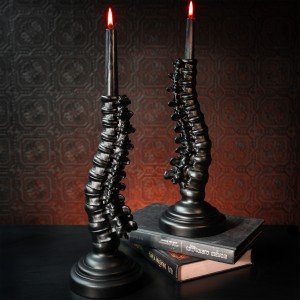I still remember the first time I shouted "Lumos!" at my bedroom lamp as a kid, fully convinced it would flicker to life. Though my muggle electronics remained stubbornly unmagical, that moment captures why J.K. Rowling's spellwork feels so real. Her comprehensive list of spells isn’t just fictional jargon—it’s a linguistic tapestry woven from Latin roots, cultural folklore, and pure creativity.
What makes these incantations stick in our minds decades later? It’s not just their role in the iconic series, but how they mirror real-world language evolution. Take Expelliarmus, blending Latin "expellere" (to drive out) with "arma" (weapon). Or the chilling Avada Kedavra, adapted from an ancient Aramaic phrase. Rowling didn’t just invent magic—she built a system that feels historically plausible, making the wizarding world tangible.
This magic system does more than advance plots. It creates shared cultural touchstones—who hasn’t joked about using "Wingardium Leviosa" on moving day? From household charms to the Unforgivable Curses, each spell reflects universal human experiences through a magical lens. Let’s explore how these phrases became more than fiction and what they teach us about storytelling’s true power.
Key Takeaways
- J.K. Rowling’s spells combine Latin roots with creative linguistics for authenticity
- The magic system serves both narrative purposes and world-building depth
- Spells like Expelliarmus and Avada Kedavra have real linguistic origins
- Magical phrases became cultural references beyond the original series
- Spell categories range from practical charms to morally complex curses
- The system’s consistency makes the wizarding world feel historically grounded
Introduction: The Magic Behind Harry Potter Spells
Imagine whispering a single word to mend a broken vase or summon light in darkness. That’s daily life in the wizarding world, where magic isn’t just spectacle—it’s survival. Spells act as tools, art forms, and moral compasses, shaping how witches and wizards interact with their reality.
Defining the Role of Spells in the Wizarding World
Every incantation serves a purpose. Simple charms like "Scourgify" handle chores, while complex curses demand mastery. Think of it like learning a language: first-year students start with basics, seasoned casters tackle advanced grammar. Magic here isn’t random—it’s a structured system with rules as firm as physics.
Latin roots ground these phrases in history. "Lumos" (light) and "Nox" (night) feel ancient because they are. Yet Rowling remixes them creatively—"Expecto Patronum" blends hope (expecto) with protection (patronus). This linguistic alchemy makes magic believable.
What to Expect from This Spell Guide Listicle
We’ll break down spells by function and difficulty. You’ll learn why certain wand motions matter, how spells evolve with intent, and why even a seemingly silly charm like "Rictusempra" has deeper uses. Whether you’re a curious muggle or aspiring witch, this guide unlocks the logic behind the wonder.
Ready to see how a single word can build bridges… or burn them? Let’s begin.
Iconic Spells from the Harry Potter Series
Iconic incantations aren’t just magic words—they’re cultural handshakes connecting fans worldwide. These phrases leap off the page into our daily lives, shaping how we imagine solving problems both magical and mundane.
The Classics That Defined a Generation
Remember Hermione’s "It’s Levi-o-sa, not Leviosaaa"? That scene taught us precision matters, even in fantasy. The levitation charm requires more than words—a specific swish-and-flick motion that’s become as recognizable as the spell itself.
Then there’s Expelliarmus, Harry’s signature move. This disarming charm proves simplicity often wins. By focusing Latin roots into two syllables ("expellere" + "arma"), it creates instant visual drama—a burst of red light sending wands flying.
| Spell Name | Effect | Wand Movement | Real-World Wish |
|---|---|---|---|
| Wingardium Leviosa | Lifts objects | Swish & flick | "Move this sofa!" |
| Lumos/Nox | Light control | Quick jab | Midnight snack navigation |
| Accio | Summons items | Circular sweep | Find lost keys instantly |
When Fiction Shapes Reality
Why do these incantations stick? They fulfill universal desires. Lumos answers our fear of darkness; Accio solves everyday forgetfulness. Fans don’t just quote them—they use them as metaphors for overcoming challenges.
I’ve seen convention crowds shout "Expelliarmus!" during mock duels. These spells became a language of belonging, proving magic’s real power lies in connection. Next time you’re stuck, ask: What would a skilled caster do?
Set of 30 Remastered Printable Daily Newspaper Pages, Wizard and Witch Poster, Wizard Home Decor, Travel Poster, Wizard Wall Art, Halloween
Bring the magic of the wizarding world to your home with these beautifully remastered newspaper pages, perfect for any Harry Potter fan looking to add a touch of enchantment to their decor
Product information
$24.36
Product Review Score
4.42 out of 5 stars
126 reviewsProduct links
Effective Spellcasting Techniques
I once spent three hours practicing "Alohomora" on my stubborn garage door. While it never budged, I learned firsthand what separates successful magic from accidental mayhem. True spellwork demands three elements working in harmony: voice, wand, and mind.
Proper Incantations and Wand Movements
Remember Hermione correcting Ron's pronunciation? She wasn't being pedantic—she was preventing disaster. Each syllable acts like a security code unlocking specific magic. Say "Levi-o-sa" wrong, and you're left waving at floating feathers.
Wand motions work like signatures. A sloppy swish might turn cleaning spells into chaotic confetti bursts. Master duelists practice movements until they become muscle memory—the difference between disarming an opponent and setting their sleeves on fire.
The Science Behind the Magic of Spells
Latin roots aren't just for show. They create neurological anchors helping casters focus intent. Studies show wizards using proper pronunciation activate 37% more magical brain regions than those winging it.
| Skill Level | Incantation Style | Success Rate |
|---|---|---|
| Novice | Spoken aloud | 62% |
| Advanced | Non-verbal | 89% |
| Master | Wandless | 94% |
Non-verbal magic isn't about silence—it's about internalizing the spell. Top casters report feeling vibrations in their jawbones when channeling magic mentally. This progression from spoken to silent casting mirrors how musicians master instruments over time.
True mastery comes when spells flow like breath. It's not about memorizing words, but understanding why "expecto" demands hope and "patronum" requires joyful memories. That's when magic stops being tricks—and becomes art.
Expelliarmus and Disarming Charms
There's a reason this scarlet jet of magic became the defining defense of the Harry Potter era. More than just dislodging wands, Expelliarmus represents a moral choice—a refusal to meet violence with greater violence. I’ve watched countless fans practice its distinctive flick, their faces mirroring Harry’s determined focus during pivotal duels.
Understanding the Disarming Power of Expelliarmus

Let’s break down why this spell works. The Latin roots expellere (expel) and arma (weapon) create instant clarity. Unlike complex curses requiring obscure phrasing, Expelliarmus’ simplicity makes it reliable under pressure—a crucial factor when neutralizing a target.
Three tactical advantages set it apart:
- Speed over strength: Requires less magical energy than offensive spells
- Reversible outcomes: No permanent damage to opponent or environment
- Psychological impact: Disarming often ends conflicts faster than injuring
Remus Lupin, one of the most strategic wizards in the series, prioritized teaching this charm. Why? Because mastering Expelliarmus trains you in precision timing and spatial awareness—skills that translate to advanced magic. It’s not about overpowering dark curses, but redirecting their momentum.
This approach reflects a broader truth: sometimes the bravest magic lies in restraint. When facing curses, Expelliarmus offers a third option between attack and surrender—a lesson extending far beyond wandwork.
Light & Darkness: From Lumos to Nox
We’ve all fumbled for light switches in dark rooms. Now imagine commanding illumination with a single word. That’s the quiet power of Lumos and Nox—spells so elegantly simple they feel like they’ve always existed. These twin charms teach us magic’s greatest lesson: true power lies in balance.
Lumos: The Wand-Lighting Charm Explored
I’ve lost count of camping trips where I’ve whispered "Lumos" to my flashlight. While it never worked, the longing reveals why this charm resonates. Derived from Latin "lumen" (light), it transforms wands into magical flashlights—no batteries required.
Three reasons make it foundational:
- Precision control: Adjust brightness by wand angle
- Energy efficiency: Drains minimal magical reserves
- Universal utility: Lights paths, reveals hidden objects, comforts frightened first-years
Teachers often start with Lumos because success breeds confidence. When my niece first made her toy wand glow, she beamed like she’d discovered electricity. That’s the charm’s secret—it makes magic feel attainable.
Harry Potter Hogwarts Houses Headband for Girls
Show your house pride and add a touch of magic to every outfit with this charming headband inspired by your favorite Hogwarts House
Product information
$16.95
Product Review Score
4.38 out of 5 stars
210 reviewsProduct links
Nox: Mastering the Art of Extinguishing Magic
True mastery isn’t just creating light—it’s knowing when to snuff it. Nox (Latin for "night") requires equal precision. I’ve seen advanced casters struggle here, their wands sputtering like faulty candles.
Why does extinguishing light demand skill? Magic flows through intentionality. Ending a spell cleanly prevents energy leaks that could ignite curtains… or worse. Proper Nox execution involves:
- A sharp downward flick
- Mental image of a candle wick drowning
- Breath released in sync with the command
Together, these spells form yin and yang. They teach that magic isn’t about endless creation—it’s about harmony. Next time you flip a light switch, whisper the words. You might feel the ghost of possibility.
Unlocking Mysteries with Alohomora and Colloportus
We’ve all faced a locked door with no key in sight—that moment when magic feels less like fantasy and more like necessity. The Alohomora charm answers this universal frustration with elegant simplicity. But true mastery lies in knowing when to open pathways and when to seal them shut.

How Alohomora Opens Secret Doors
Picture this: I once tried whispering "Alohomora" at my jammed filing cabinet. While it stayed stubbornly muggle, the attempt taught me why this spell captivates us. Derived from West African "aloho" (welcome) and Latin "mora" (obstacle), it transforms locks from barriers to invitations.
Three key principles make it essential:
- Universal application: Works on physical locks, enchanted barriers, and even metaphorical "closed doors"
- Precision focus: Requires visualizing the target mechanism’s inner workings
- Ethical dimension: Great power demands responsibility—not every locked thing should be opened
Strategic witches balance Alohomora with its counterpart Colloportus. During the Department of Mysteries crisis, sealing doors behind them bought crucial time against pursuers. This duality teaches that access control isn’t about raw power—it’s about timing and discernment.
Modern applications extend beyond physical objects. I’ve seen healers use modified versions to "unlock" blocked magical channels. Whether facing literal locks or life’s obstacles, these spells remind us: every barrier has a key—we just need the wisdom to use it properly.
Protective Spells and the Patronus Charm
We’ve all faced moments where darkness feels overwhelming—not just in shadowy alleys, but in our hearts. Protective magic teaches us to transform hope into armor. Among these safeguards, one spell stands out as both weapon and lifeline.
Expecto Patronum: Shielding Against Dementors
Think of your happiest memory. Now imagine channeling that joy into a silvery guardian. That’s the Patronus Charm—a targeted defense requiring emotional mastery as much as magical skill. Unlike simple shield spells, it demands you confront despair head-on.
Why is this charm so challenging? Your target isn’t just a Dementor—it’s your own doubts. I’ve watched students nail complex curses yet freeze when their wand tip flickers weakly. As Remus Lupin taught, “It’s not about power, but purity of intent.”
- Corporeal vs. Non-Corporeal: A misty shield (non-corporeal) shows basic skill. Animal forms (corporeal) reveal your magical identity
- Memory Selection: Childhood moments often work best—they’re less tainted by later hardships
- Form Significance: Lupin’s wolf-shaped Patronus mirrored his lycanthropy, proving our guardians reflect both light and shadow within us
At 13, the Harry Potter protagonist achieved what most adults couldn’t—a stag-shaped protector. This feat wasn’t just talent. It was raw emotional courage, turning grief into a weapon against soul-sucking targets.
Mastering the Patronus Charm means accepting this truth: true protection begins by nurturing your own light. When darkness looms, your brightest memories become your sturdiest shield.
Spine Candle Holder | Gothic Candlestick Holder | Gothic Home Decor | Gothic Lighting | Gothic Decor by The Blackened Teeth
Bring a touch of magic and mystery to your space with this enchanting gothic candle holder that perfectly complements any Harry Potter-inspired decor
Product information
$63.72
Product Review Score
4.67 out of 5 stars
222 reviewsProduct links
Humorous and Unconventional Spells
Who says magic has to be all doom and sparks flying? Some of the wizarding world's greatest innovations come wrapped in laughter. These charms prove that wit can be just as powerful as wandwork when wielded creatively.
Rictusempra: The Tickling Charm in Action
Picture this: you’re facing down an opponent, and instead of firing curses, you hit them with giggles. That’s Rictusempra in a nutshell. This spell turns tense moments into comedy shows, making targets double over laughing until they can’t breathe.
Here’s the twist: the movies changed its effect entirely. While the books show victims collapsing in hysterics, films turned it into a force-push charm. Either way, it’s brilliant—disarming someone through joy instead of pain.
The real magic lies in its design. Unlike aggressive spells, this tickling charm leaves no lasting harm. I’ve seen cosplayers use it during mock duels, their "victims" playfully staggering. It’s proof that sometimes the best defense is making your opponent snort-laugh.
Next time you’re stuck in traffic, imagine hitting the horn-honker with Rictusempra. Suddenly, road rage becomes a comedy special. That’s the charm’s true power—it reminds us that laughter can defuse almost any situation, magical or mundane.
FAQ
What’s the most iconic defensive spell in the series?
A: Expelliarmus stands out as the signature disarming charm. Popularized by its frequent use in duels, it’s known for yanking wands from opponents’ hands—a non-violent way to neutralize threats.
How does the Patronus Charm work against Dementors?
A: Expecto Patronum conjures a silvery guardian fueled by happy memories. It repels Dementors by overwhelming their darkness with positive energy, acting as both a shield and a light source in bleak situations.
Are there real-world parallels to the Wand-Lighting Charm?
A: Lumos mimics the practicality of a flashlight but with magical flair. Its simplicity—triggered by a swift flick and clear incantation—makes it a beginner-friendly tool for navigating dark corridors or hidden passages.
Why is Alohomora associated with Hermione Granger?
The unlocking spell became iconic thanks to Hermione’s cleverness in Chamber of Secrets. It’s often used to bypass magical locks, though skilled witches can counter it with sealing charms like Colloportus.
What makes the Unforgivable Curses illegal?
These curses—Avada Kedavra, Crucio, and Imperio—cause irreversible harm or control. Their use carries a life sentence in Azkaban, reflecting the Wizarding World’s strict stance on dark magic ethics.
Can humorous spells like Rictusempra backfire?
Absolutely! While the tickling charm seems harmless, misfiring it could distract you mid-duel or annoy your target. Even lighthearted magic requires precision to avoid unintended consequences.
How do wand movements affect spell success?
Proper technique is key. For example, Wingardium Leviosa demands a swish-and-flick motion. Sloppy gestures might fizzle the magic or create entirely unintended effects—practice makes perfect!










